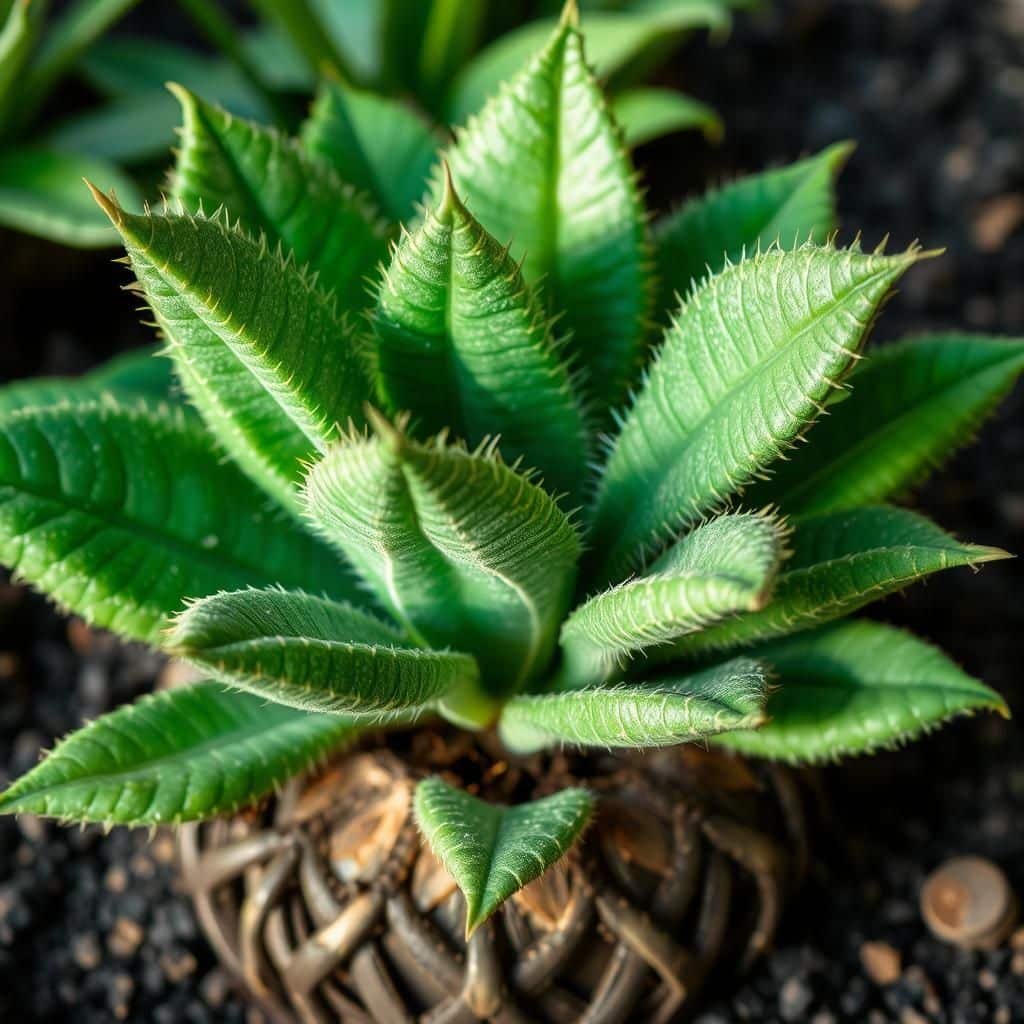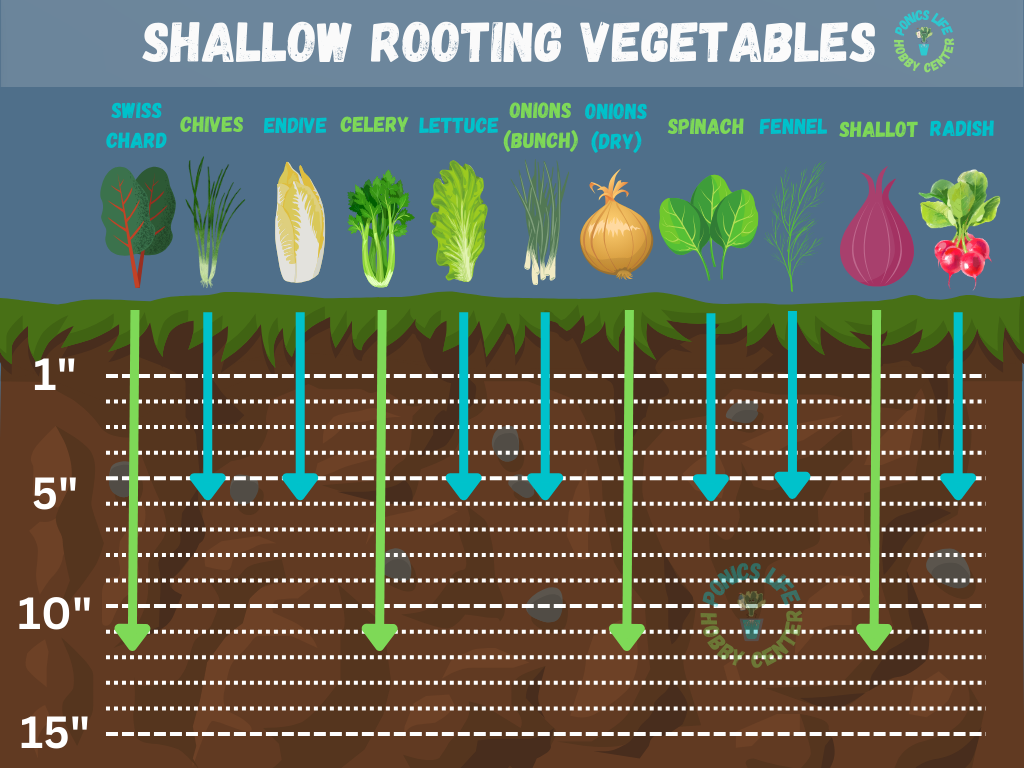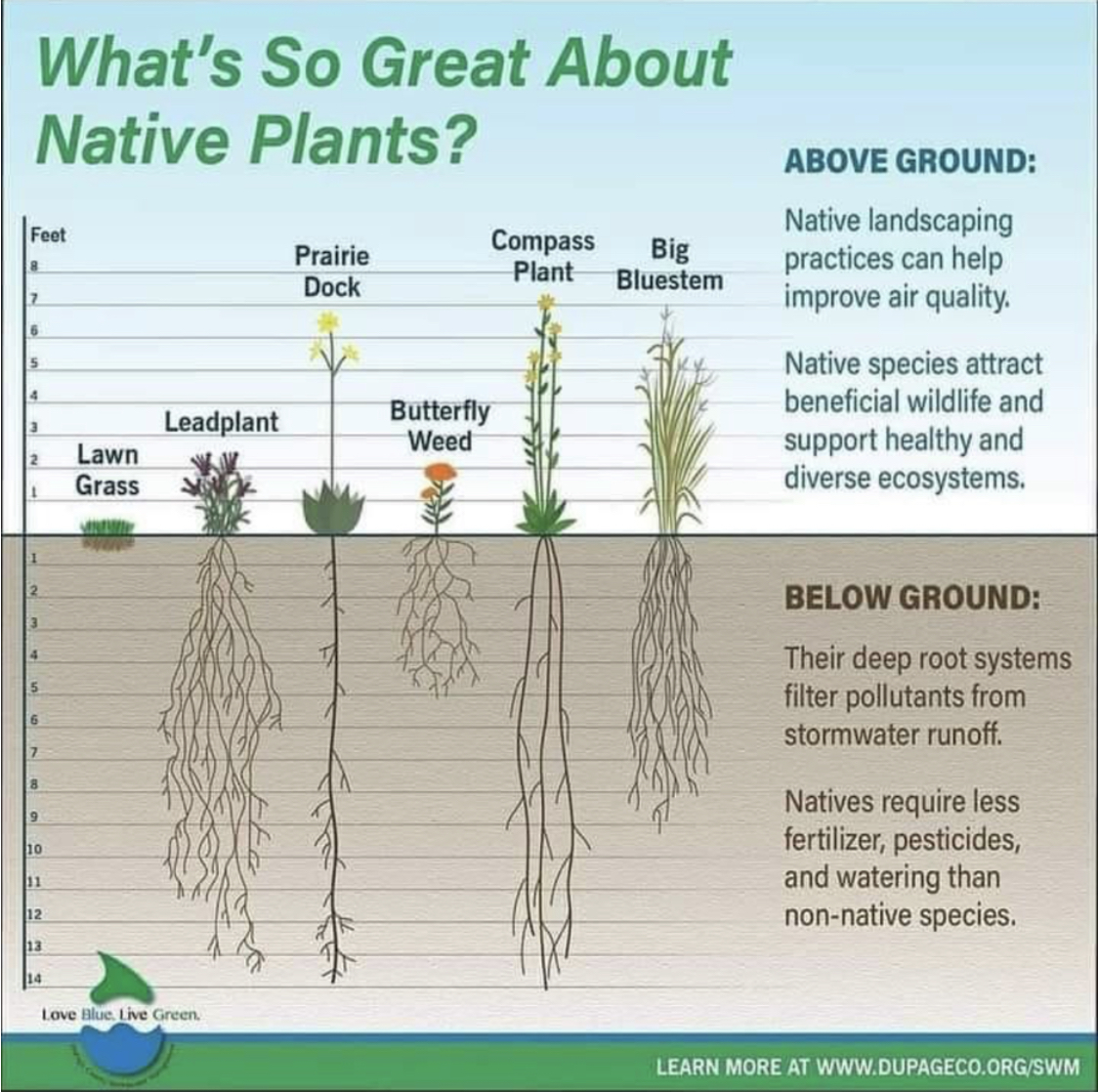Top Shallow Rooted Plants Australia: Ideal Choices for Your Garden

When it comes to gardening in Australia, selecting the right plants is crucial for ensuring a thriving outdoor space. Shallow-rooted plants are particularly advantageous, as they require less water and can adapt well to various soil conditions. This article explores the top shallow-rooted plants suitable for Australian gardens, highlighting their unique features, benefits, and ideal growing conditions. Whether you're looking to enhance your landscape, create a vibrant flower bed, or cultivate a low-maintenance garden, these plants offer the perfect solution. Discover how incorporating these resilient and versatile plants can transform your garden into a flourishing oasis.
Shallow Rooted Plants in Australia
Shallow rooted plants in Australia play a vital role in the country's unique ecosystems, particularly in arid and semi-arid regions where water conservation is crucial. These plants possess root systems that typically extend no deeper than 30 centimeters, allowing them to absorb surface moisture very efficiently, especially during brief rainfall events. Shallow rooted plants, such as various species of grasses and herbs, are well adapted to the Australian climate and often thrive in poor soil conditions, providing essential habitats for numerous insects and other fauna. Moreover, these plants contribute to soil stability, preventing erosion and maintaining the integrity of delicate environments.
Characteristics of Shallow Rooted Plants
Shallow rooted plants are characterized by their root architecture, which is designed to maximize nutrient and moisture uptake from the upper layers of the soil. Most of these plants exhibit a fibrous root system that facilitates quick access to water and nutrients after rainfall. Their leaves are often adapted to minimize transpiration, conserving moisture in a climate that can be both hot and dry. The ability to adapt to local conditions makes these plants resilient and essential components of biodiversity in Australia.
Examples of Shallow Rooted Plants in Australia
Some common examples of shallow rooted plants in Australia include species such as Kangaroo Grass (Themeda triandra), Wallaby Grass (Joycea spp.), and various wildflowers. These plants display a range of adaptations that allow them to survive in the often harsh Australian environment. They contribute not only to the landscape but also serve as important food sources for native wildlife and assist in soil health. Understanding these examples helps underscore the ecological significance of shallow rooted plants.
Ecological Importance
The ecological importance of shallow rooted plants cannot be overstated; they are integral in preventing soil erosion, improving water infiltration, and supporting a diverse range of wildlife. These plants often serve as ground cover, which protects the soil from the impact of raindrops and wind. Additionally, by stabilizing the soil, they help to maintain the habitats necessary for other species, creating a balanced ecosystem. Their role in the nutrient cycle is also critical, as they contribute to the overall health of the environment by promoting various beneficial interactions within the soil.
Adaptations to Australian Climate
Shallow rooted plants in Australia have developed several key adaptations to cope with the extreme weather conditions found across the continent. These adaptations include features such as drought resistance, where plants can enter a dormant state during extended dry periods, or have waxy leaves to reduce water loss through evaporation. Some species also exhibit deep-rooted cohorts in adjacent plant communities, which can help access deeper soil moisture, thus maintaining the overall health of the ecosystem. These strategies enable comfortable survival during both dry spells and sudden bursts of rainfall.
Conservation Efforts
Conservation efforts for shallow rooted plants in Australia are essential for maintaining biodiversity and ecological balance. Initiatives focus on protecting native habitats from invasive species, promoting the restoration of natural landscapes, and supporting the use of native plant species in landscaping and gardening. Furthermore, education programs aimed at increasing awareness about the benefits and functions of these plants are crucial for fostering a culture of sustainability and environmental responsibility. These efforts contribute not only to the survival of the plants themselves but also strengthen the ecosystems they inhabit.
| Plant Name | Family | Characteristics |
|---|---|---|
| Kangaroo Grass | Poaceae | Adapted to withstand drought; deep fibrous roots |
| Wallaby Grass | Poaceae | Forms dense clumps; supports diverse wildlife |
| Common Daisy | Asteraceae | Brightly colored flowers; attracts pollinators |
What small Australian native plants have shallow roots?

When considering small Australian native plants with shallow roots, several species stand out due to their ecological adaptability and ornamental value. These plants typically have root systems that spread horizontally rather than deeply, making them suitable for various garden designs, especially in regions where the soil quality may be poor or where water retention is an issue. Below are some notable examples:
1. Dianella species (Flax Lily)
2. Kangaroo Paw (Anigozanthos)
3. Correa species (Correa)
4. Brachyscome species (Swan River Daisy)
5. Melaleuca species (Paperbark)
Dianella Species (Flax Lily)
Dianella, commonly known as Flax Lily, includes various small perennial plants that thrive in diverse environments across Australia. These plants are prized for their attractive foliage and blue-purple flowers that attract pollinators. Their shallow roots enable them to tolerate drought and compete for nutrients effectively.
- Adaptability: Can grow in different soil types, from sandy to clay.
- Low Maintenance: Requires minimal care once established.
- Wildlife Friendly: Attracts birds and butterflies, enhancing biodiversity.
Kangaroo Paw (Anigozanthos)
The Kangaroo Paw is a unique and iconic Australian plant known for its stunning, tubular flowers that resemble a kangaroo’s paw. With shallow roots, these plants thrive in well-drained soils and are excellent for adding vibrant color to gardens.
- Flower Colors: Available in various colors, including red, yellow, and green.
- Drought Tolerance: Suited for arid gardens, very drought-resistant.
- Garden Use: Often used as border plants or in cottage gardens.
Correa Species (Correa)
The Correa genus includes several small shrubs that are characterized by their bell-shaped flowers, which bloom in shades of white, pink, and red. Their shallow root systems make them ideal for confined spaces and urban gardens.
- Varieties: Multiple species with different flower forms and colors.
- Pollinator Attraction: Attracts bees and other small wildlife.
- Versatility: Performs well in coastal and shaded areas.
Brachyscome Species (Swan River Daisy)
Brachyscome, or Swan River Daisy, is a small herbaceous plant noted for its cheerful daisy-like flowers that flourish in spring and summer. Shallow roots help these plants establish quickly in various garden conditions, making them popular as ground cover.
See also:
- Color Variation: Flowers range from white to blue and purple.
- Ground Cover: Effective in suppressing weeds and helping with erosion control.
- Seasonal Interest: Blooms extensively during the growing season.
Melaleuca Species (Paperbark)
Melaleuca encompasses a range of plants, including small trees and shrubs known for their distinctive papery bark and aromatic foliage. They typically have shallow root systems that allow them to thrive in wet or poorly drained soils.
- Environmental Benefits: Provides excellent cover for birds and other wildlife.
- Aesthetic Appeal: Attractive foliage and flowering, great for landscaping.
- Moisture Tolerance: Ideal for rain gardens or near water bodies.
What plants have shallow root systems?

Many plants are characterized by shallow root systems, which typically extend only a few inches beneath the soil surface. These root systems are often adapted to capture moisture and nutrients from the top layer of soil. Here are some common examples of plants with shallow root systems:
1. Grasses: Most grasses have shallow root systems, making them efficient at absorbing water and nutrients near the surface.
2. Annual flowers: Many annual flowering plants, such as petunias and marigolds, have evolved to have shallow roots, allowing them to quickly utilize resources.
3. Vegetables: Numerous vegetable plants, like lettuce and spinach, develop shallow roots suited for short-term growth cycles.
4. Shrubs: Certain shrubs, such as boxwood and spirea, are known for their shallow root systems, which help them thrive in well-drained soils.
5. Succulents: Many succulent species have shallow roots designed to absorb water efficiently from rains or dew, despite having a drought-resistant body.
Benefits of Shallow Root Systems
Shallow root systems confer several advantages to plants, particularly in environments where soil moisture fluctuates. These benefits include the ability to:
- Quickly absorb surface water: Shallow roots allow plants to take advantage of light rains or morning dew.
- Grow in less fertile soils: Many shallow-rooted plants can thrive in poor soils where deeper root systems would struggle.
- Stability in loose soils: Shallow roots can help anchor plants in loose or sandy soils, preventing them from toppling over.
Common Examples of Shallow-Rooted Plants
Several well-known plants exhibit shallow root systems, making them easy to cultivate and maintain. Notable examples include:
- Clovers: Known for enriching soil with nitrogen, clovers have shallow roots ideal for various soil types.
- Wildflowers: Many native wildflowers exhibit shallow roots, allowing them to establish quickly in disturbed areas.
- Herbs: Herbs like basil and oregano typically grow shallow roots for quick access to nutrients.
Shallow Roots and Environmental Adaptation
Plants with shallow root systems are often adapted to environments where:
- Water is limited: These plants can quickly absorb any moisture available, making them better suited for arid regions.
- Soil is compacted: In compacted soils, deeper roots may struggle, while shallow roots still access moisture and nutrients.
- Frequent disturbances occur: Plants in disturbed areas benefit from rapid establishment due to their shallow roots.
Considerations for Gardening with Shallow Root Plants
When cultivating plants with shallow root systems, gardeners should consider several key aspects:
- Soil quality: Healthy topsoil is crucial, as shallow roots rely heavily on the upper layers of soil for nutrients.
- Watering techniques: Consistent watering, especially during dry spells, will help sustain these plants.
- Mulching: Applying mulch can help retain moisture and regulate soil temperature for shallow-rooted plants.
Managing Competition Among Shallow-Rooted Plants
Shallow-rooted plants can sometimes compete with one another as well as with deeper-rooted species. Effective management includes:
- Plant spacing: Providing adequate space between plants helps reduce competition for light and nutrients.
- Regular maintenance: Keeping the area free of weeds can prevent other plants from competing for resources.
- Species selection: Choosing diverse plant species can balance competition and enhance ecosystem resilience.
What native plants have deep roots in Australia?

Australia is home to a unique diversity of native plants that have adapted to its varied climates and soil types, with many featuring deep roots that help them survive in arid environments. Some of the notable native plants with deep root systems include:
1. Acacia (Wattle) Species
Acacias are a large group of flowering plants, and many species have extensive root systems that extend deep into the ground.
- Durability: Their deep roots allow them to access water deep below the soil surface.
- Soil Improvement: Through nitrogen fixation, Acacias enhance soil fertility.
- Variety: Over 1,300 species exist, making them versatile for various habitats.
2. Eucalyptus Trees
Eucalyptus species, particularly gum trees, possess remarkable root systems that can drill anywhere from 10 to 15 meters deep, enabling them to endure periods of drought.
- Water Access: Deep roots help them extract moisture from deep aquifers.
- Adaptation: Adapted to many ecosystems, they provide shade and habitat.
- Fire Resilience: Their adaptations allow them to survive bushfires better than many other species.
3. Callitris (Cypress Pine) Species
Callitris species are well-adapted to arid regions of Australia, boasting deep roots that provide stability and sustenance in rocky soils.

- Resistance: They thrive in nutrient-poor soils and are resilient to harsh weather.
- Timber Quality: The wood is highly durable, making it sought after for construction.
- Habitat Support: Provides shelter for various wildlife, including birds and insects.
4. Allocasuarina (Sheoak) Species
Allocasuarina species are critical in establishing ecosystems in sandy and degraded soils, often featuring extensive and deep root systems.
- Soil Stabilization: Their roots help prevent soil erosion in vulnerable areas.
- Symbiosis: They form relationships with fungi that enhance nutrient absorption.
- Environmentally Friendly: Support local biodiversity, benefiting surrounding flora and fauna.
5. Native Grasses
Many native grasses, such as Wallaby grass (Rytidosperma), develop deep root systems that enhance soil structure and aid in moisture retention.
- Soil Health: Their roots help improve soil aeration and water retention capabilities.
- Drought Resistance: They are highly resilient to drying conditions, essential in Australian landscapes.
- Pasture Use: Many are suitable for grazing, supporting agricultural practices.
What ground cover grows in shallow soil?

Certainly!
Ground cover plants that thrive in shallow soil can be beneficial for various landscaping needs. These plants often have adapted root systems and growth habits that allow them to be hardy in restricted soil environments. Here’s a detailed examination of several options and their characteristics.
1. Creeping Thyme
Creeping thyme is an excellent choice for shallow soils due to its low growth pattern and drought resistance. This plant not only provides green coverage but also blooms with beautiful purple flowers, attracting pollinators.
- It thrives in full sun and poor soil conditions.
- The plant is fragrant, adding an aromatic quality to gardens.
- It can tolerate foot traffic, making it suitable for walkways.
2. Sedum
Sedum, commonly known as stonecrop, is a succulent that performs well in shallow soils. Its fleshy leaves allow it to store water, making it drought-resistant and excellent for regions with less moisture.
- It comes in various species and colors, providing aesthetic diversity.
- Requires minimal maintenance, making it ideal for low-care gardens.
- Attracts pollinators during its blooming season.
3. Creeping Juniper
Creeping juniper is a low-growing evergreen that thrives in shallow, rocky soils. It offers excellent ground cover with vibrant foliage throughout the year.
- Resistant to drought and poor soil conditions.
- Provides excellent erosion control on slopes.
- Its dense growth creates a habitat for small wildlife.
4. Rock Rose (Cistus)
Rock rose, or Cistus, is a hardy plant that flourishes in dry, shallow soils. It produces beautiful flowers and is well-suited for Mediterranean climates.
- It is drought-tolerant, requiring minimal watering once established.
- The plant is low-maintenance, ideal for those who prefer less gardening work.
- Attracts pollinators and provides food for local wildlife.
5. Ajuga (Bugleweed)
Ajuga, commonly known as bugleweed, is a robust ground cover that performs well in partial shade and can adapt to poor soil conditions. It features stunning foliage and spikes of tubular flowers.
- It spreads quickly, forming a dense mat that suppresses weeds.
- It enjoys both sun and shade, making it a versatile plant.
- Offers brilliant colors, ranging from green to burgundy and violet flowers.
Questions from Our Readers
What are shallow rooted plants in Australia?
Shallow rooted plants in Australia are species that have root systems primarily located in the topsoil. These plants are adapted to arid environments, allowing them to absorb moisture quickly during rainfall and are essential for maintaining soil stability.
Why are shallow rooted plants important for the Australian ecosystem?
Shallow rooted plants play a crucial role in the Australian ecosystem by preventing soil erosion and supporting biodiversity. They provide habitats for various wildlife and contribute to the nutrient cycle by decomposing and enriching the soil.
Can shallow rooted plants survive in drought conditions?
Yes, many shallow rooted plants in Australia are specially adapted to thrive in drought conditions. Their root systems allow them to efficiently capture water from light rainfalls and store it in their tissues, ensuring their survival during prolonged dry spells.
What are some common examples of shallow rooted plants found in Australia?
Some common examples of shallow rooted plants in Australia include the dwarf shrub, ground covers, and various grasses. Species like Acacia and Melaleuca often exhibit shallow roots, making them well-suited for the Australian landscape.
See also:

If you want to read more articles like Top Shallow Rooted Plants Australia: Ideal Choices for Your Garden, we recommend you check out our Landscaping category.
Leave a Reply
Related Articles